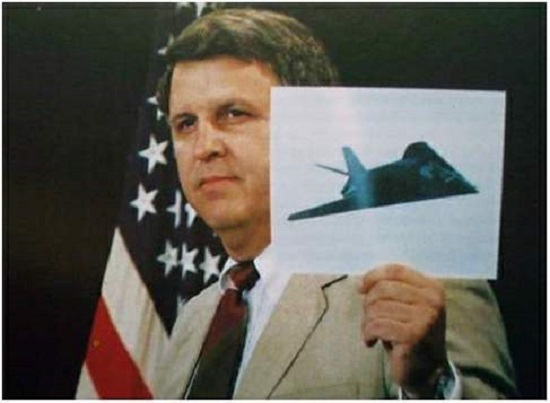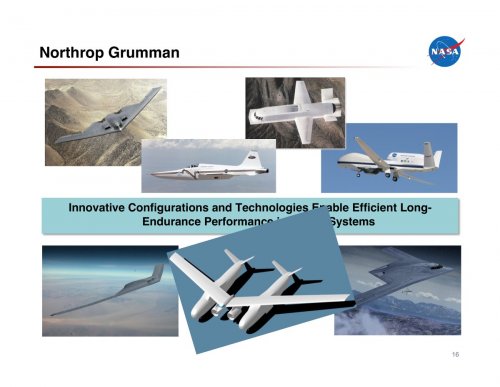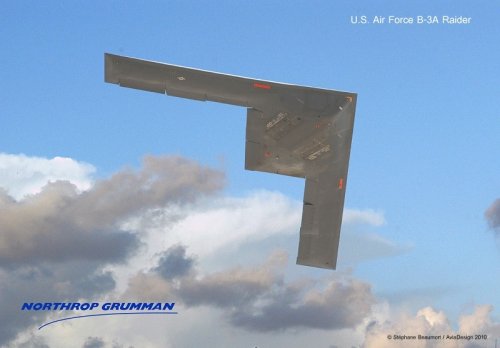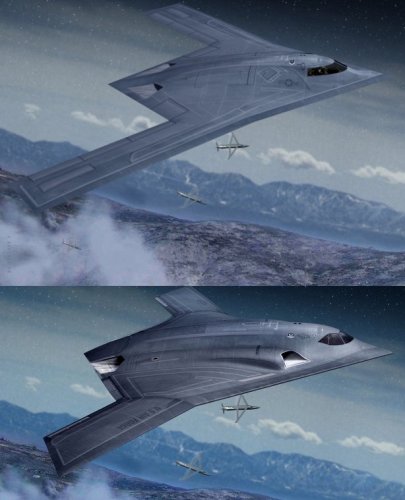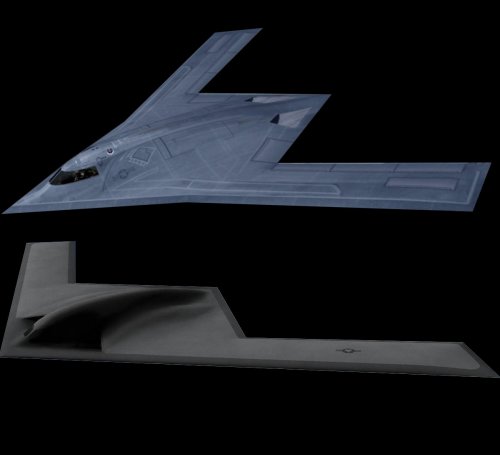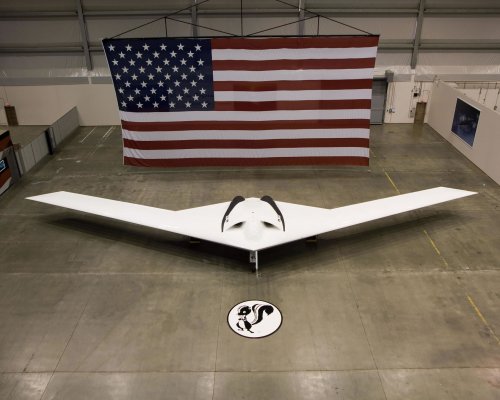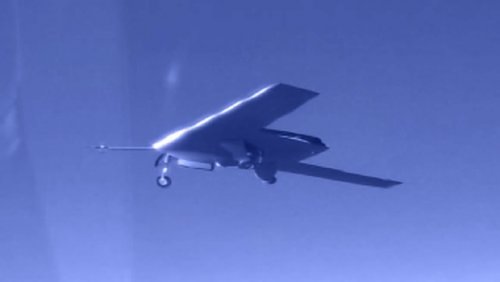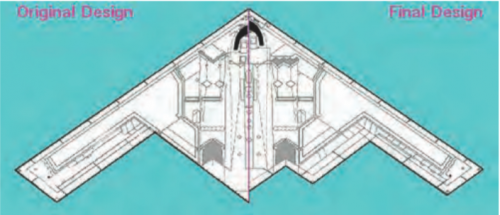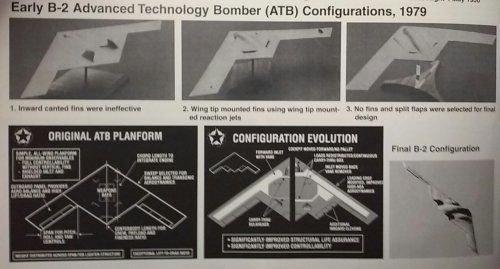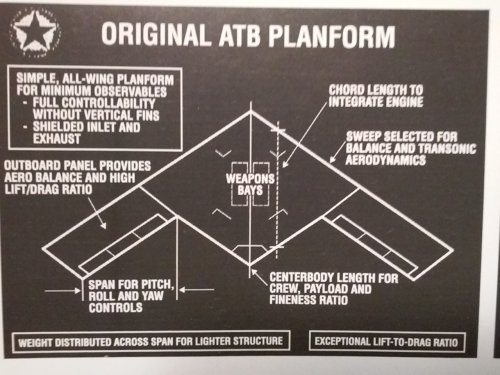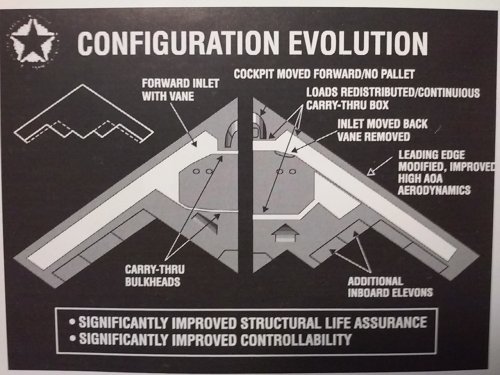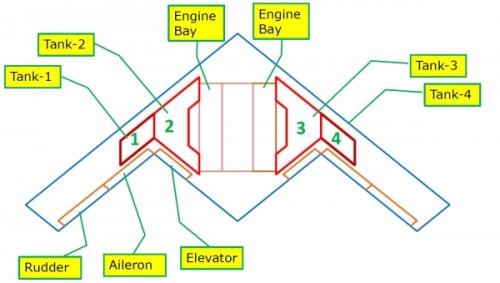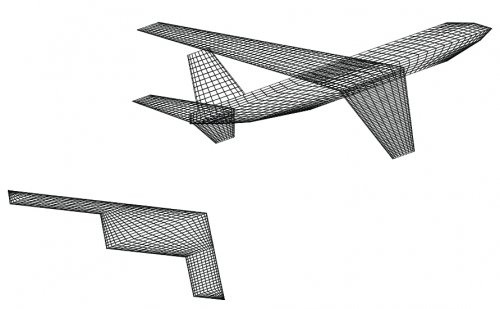PaulMM (Overscan) said:
NGB design to B-21 comparison. Note the slightly cranked leading edge versus the absolute straight leading edge. Exhausts and intake comparisons are interesting. B-21 design appears to be somewhat larger. I can't help feeling that the B-21 image could be a wide angle shot of something with the same basic geometry of the NGB design.
Scott has a wonderful drawing that shows most of the known Northrop flying wing configurations.
From the released artist rendering and what we know of the program requirements a number of things can be inferred. We know that the LRS-B is *likely* to be smaller than the B-2 for several reasons. We also know that propulsion is a primary driver for the length of a flying wing configuration - engines, inlets, and exhaust. The length of the aircraft will drive many of the other dimensions and affect the speed, range, payload mass and RCS.
Given those things it would be worthwhile to look at the Northrop ATA and original ATB. Inlet and exhaust design has certainly advanced significantly since the period when those were designed and is likely to be a smaller % of the engine or vehicle length. There may be enough information in the LRS-B rendering to estimate how much of the length is engine and how much is duct.


